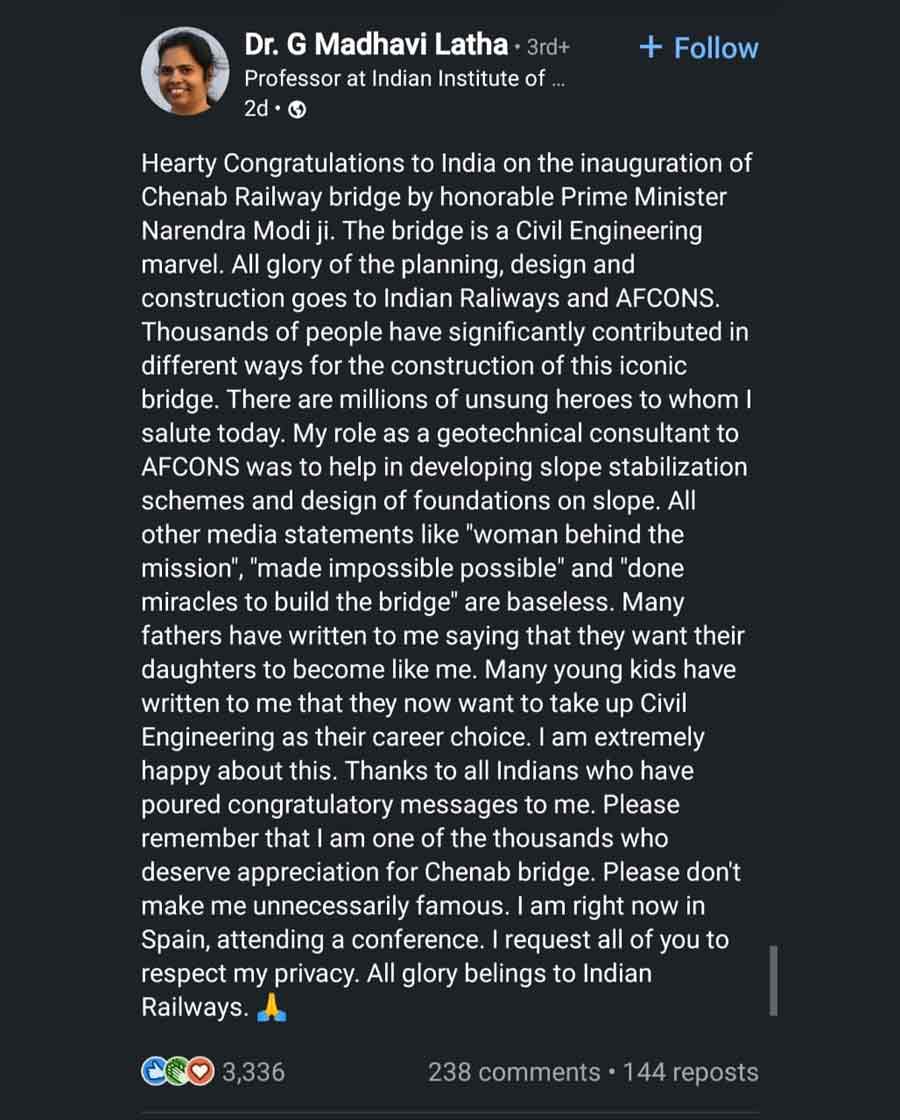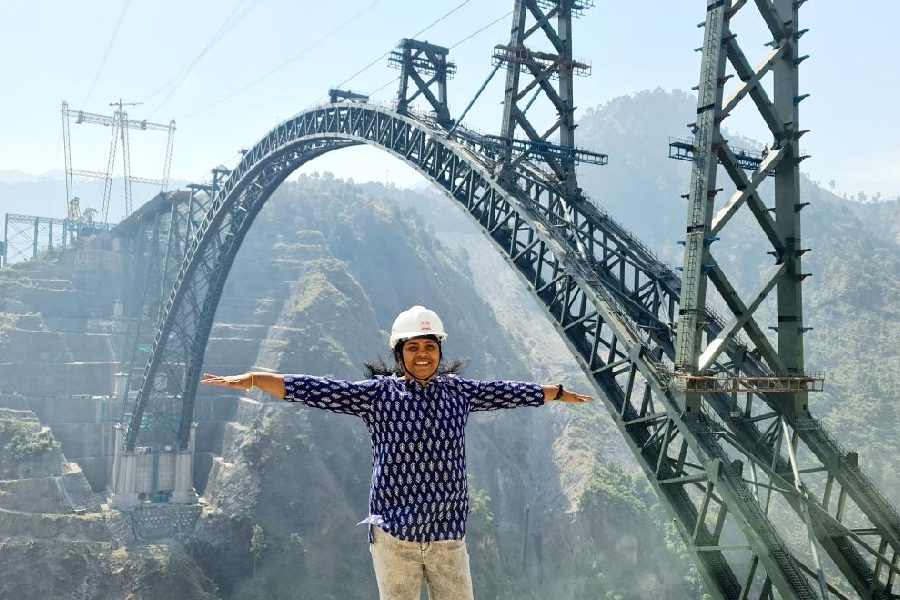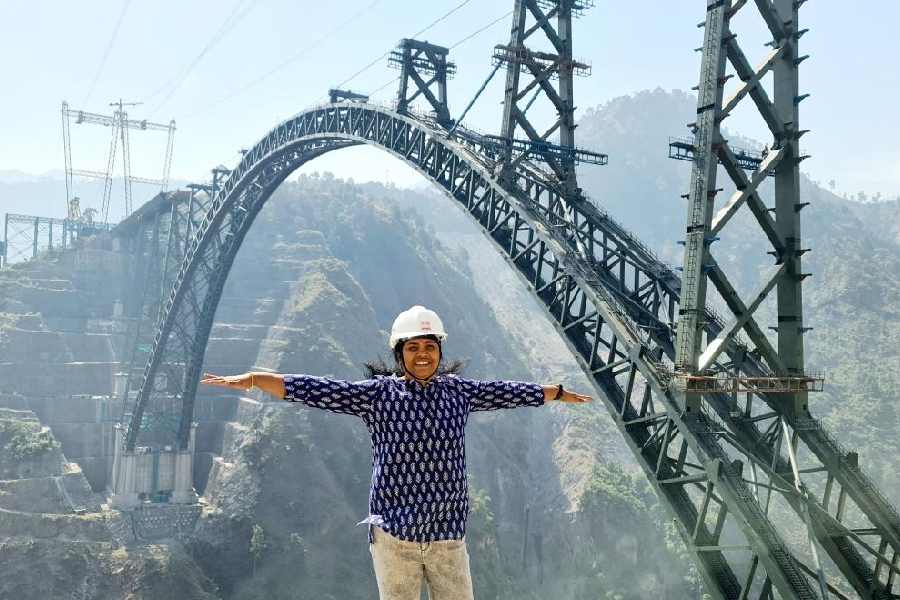In the spotlight over the world’s tallest railway arch bridge over the Chenab River, Professor G. Madhavi Latha, says glory for the project belongs to the Indian Railways and “thousands of unsung heroes”, who had worked behind the scenes to achieve the engineering feat.
“Please don’t make me unnecessarily famous. I am one of the thousands who deserve appreciation for Chenab Bridge,” she said in a LinkedIn post on June 9, three days after Prime Minister Narendra Modi inaugurated the bridge in Jammu and Kashmir.
She credited the Indian Railways and Afcons for executing what many had earlier deemed “an impossible task.”

Dr. G Madhavi Latha (LinkedIn)
“All glory belongs to Indian Railways,” she wrote, acknowledging the magnitude of the endeavour that tested the limits of civil engineering in one of the country’s most treacherous terrains.
“I salute the millions of unsung heroes,” wrote Dr Latha, a professor at the Indian Institute of Science (IISc), Bengaluru, who served as a geotechnical consultant to Afcons, the engineering firm that constructed the bridge.
The Chenab Bridge, which soars 359 metres above the Chenab River — 35 metres higher than the Eiffel Tower — was built at a cost of Rs 1,486 crore. It was inaugurated on June 6.
It is part of the ambitious 272km Udhampur-Srinagar-Baramulla Railway Link (USBRL), a project featuring 36 tunnels and 943 bridges aimed at connecting Jammu and Srinagar through rail.
Dr Latha, a leading expert in rock mechanics and civil engineering, was involved with the Chenab Bridge for 17 years.
She played a crucial role in developing slope stabilisation schemes and designing foundations on challenging terrain. “My role was to help in developing slope stabilisation schemes and design of foundations on slope,” she wrote.
Dr Latha, who is now in Spain to attend a conference, wrote she was overwhelmed by the messages of support and admiration.
“Many fathers have written to me saying that they want their daughters to become like me. Many young kids have written to me that they now want to take up Civil Engineering as their career choice,” she shared.
Despite being described as the “woman behind the mission” and attributing “miracles” to her role, Dr Latha dismissed such claims as “baseless.”
Construction of the bridge posed several challenges, including difficult terrain, seismic activity, and unpredictable geological conditions.
Dr Latha and her team adopted a “design-as-you-go” approach to overcome these hurdles — an adaptive method that accounted for real-time findings such as fractured rocks and hidden cavities earlier surveys had missed.
“Our objective was to design for worst-case scenarios to minimise the risk of rockslides,” said Dr Latha, recalling the difficulty of even reaching the site. “What we didn’t know were the secrets the mountain would throw at us,” she told The Telegraph on June 5.
Dr Latha detailed her technical journey in a paper titled Design as You Go: The Case Study of Chenab Railway Bridge, published in a special women’s issue of the Indian Geotechnical Journal, which she also shared on her LinkedIn.
“I’m happy to have been part of a project to realise a century-old dream,” she said.


